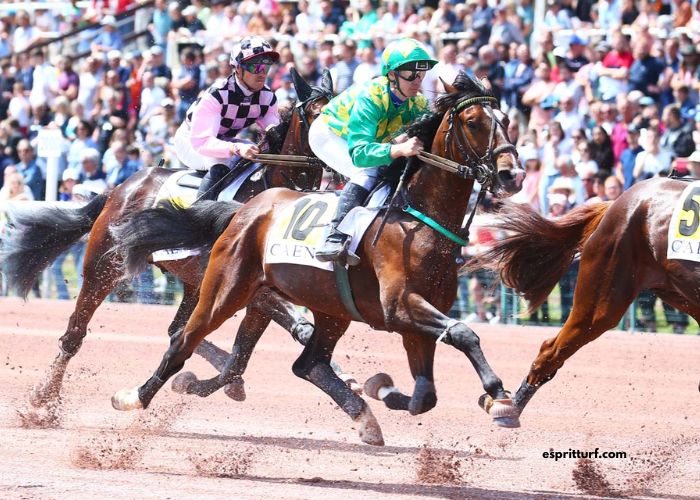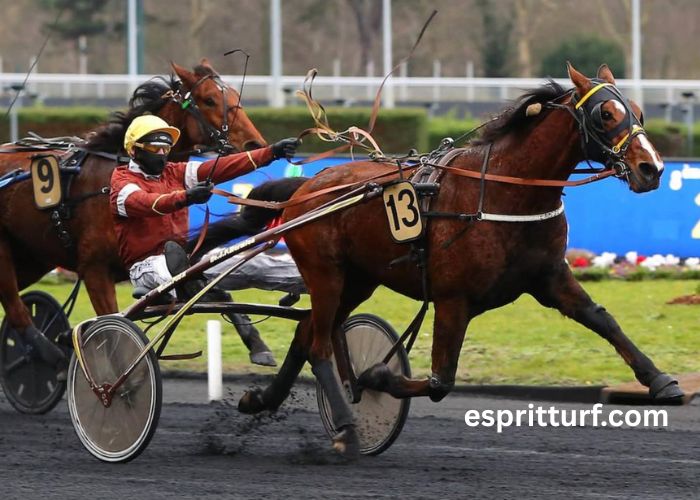Le Triangle Du Quinte is a widely discussed system among punters aiming to maximize their success in Quinté+ betting. It focuses on the strategic selection of three horses in a specific pattern.
This concept has gained popularity in turf betting circles due to its methodical approach to race analysis. When used correctly, Le Triangle Du Quinte can be a powerful predictor in major horse racing events.
What Is Le Triangle Du Quinte And How Does It Work?
Le Triangle Du Quinte is a betting technique designed to improve prediction accuracy in Quinté+ races. The concept revolves around selecting three core horses believed to dominate the top positions. These three horses form the “triangle” that punters rely on as anchors for more elaborate betting combinations, helping to narrow the field while still maintaining flexibility for success.
Unlike random or purely statistical picks, Le Triangle Du Quinte involves analytical observation of form guides, jockey experience, and past performance in similar conditions. The triangle structure allows bettors to test multiple scenarios with those three horses in key positions. This system simplifies yet strengthens the chance of forming a winning combination, especially in complex races where many factors are at play.
Why Is Le Triangle Du Quinte Considered Effective In Turf Betting?
Le Triangle Du Quinte is considered effective because it reduces guesswork while maintaining structure in betting strategy. Rather than spreading bets thinly across the entire field, punters concentrate on three trusted selections, increasing their odds of winning. These selections are often based on detailed data analysis, such as performance metrics, race history, and fitness levels, which makes this system more grounded in logic than luck.
The beauty of Le Triangle Du Quinte lies in its ability to adapt across different types of races and fields. Bettors can rotate the triangle based on real-time observations or new information, keeping the strategy dynamic. By focusing on a triangular core and placing additional horses around it, punters build a stable yet versatile system. This tactic enhances the efficiency of investment, making it appealing to those who prefer a structured and intelligent way of betting.
Can Le Triangle Du Quinte Be Used For All Race Conditions?
The adaptability of Le Triangle Du Quinte makes it suitable for various race conditions, including turf or dirt tracks, long-distance or sprint formats, and different horse classes. While some systems falter under changing race types, this triangle-based method proves effective when backed by sound research. By choosing horses that show consistency across various conditions, punters can maintain the effectiveness of their triangle even when variables shift.
However, it’s important to note that success with Le Triangle Du Quinte heavily depends on updated race-day information. Track condition changes, unexpected horse withdrawals, or alterations in weather can impact race outcomes significantly. Bettors who remain flexible and responsive to such changes while maintaining the triangle structure generally achieve more consistent results. The method does not promise wins in every race but gives a solid framework to tackle unpredictable racing scenarios.
How Should You Choose Horses For Le Triangle Du Quinte?
The selection of horses for Le Triangle Du Quinte requires a careful blend of statistical data and race intuition. Most punters start by analyzing form guides, focusing on horses with recent strong finishes, consistent pace, and favorable weights. Jockey and trainer combinations are also considered, as some duos have a history of delivering strong performances in key events. These factors help bettors identify the core trio around which to build their triangle.
In addition, deeper insights such as previous encounters between selected horses, their preferred race distances, and current health indicators can further refine the choices. Punters may use video analysis of past races to observe patterns that are not evident in raw statistics. Successful use of Le Triangle Du Quinte demands not only data interpretation but also an understanding of racing psychology and momentum shifts. With the right horses chosen, the triangle becomes a forceful tool for prediction.
Is Le Triangle Du Quinte Suitable For Beginners?
While Le Triangle Du Quinte may seem complex at first, it is actually suitable for beginners who are willing to invest a bit of time into understanding horse racing dynamics. The system offers a focused entry point into Quinté+ betting, allowing novices to avoid overwhelming themselves with a full field of unpredictable options. By concentrating on three carefully selected horses, new bettors gain a manageable framework for building their knowledge of race behavior and betting outcomes.
That said, Le Triangle Du Quinte still requires some basic understanding of racing terms, odds, and bet types. Beginners are encouraged to start with small stakes while learning how to assess form, interpret jockey stats, and understand track variables. Over time, with practice and observation, new bettors can gradually build confidence in using the triangle method. As knowledge grows, the triangle evolves into a reliable strategy that bridges theory and betting practice in a rewarding way.
What Makes Le Triangle Du Quinte A Unique Betting Strategy?
Le Triangle Du Quinte is unique because it marries structure with flexibility, offering a strategic approach without limiting the bettor’s creativity. Unlike rigid systems that follow a set formula, this method allows for continual adjustment based on current race-day data. The triangular base serves as a stable core, while punters can modify surrounding horses, stake amounts, and bet combinations. This hybrid strategy provides both confidence and room for improvisation.
Another unique aspect of Le Triangle Du Quinte is its ability to uncover hidden betting value. By narrowing the focus to three horses, bettors often discover underrated entries with high potential, especially when paired with tactical placements in combination bets. The triangle structure also serves as a mental model, helping punters stay organized and consistent in their betting routines. This combination of analytical precision and adaptable execution sets Le Triangle Du Quinte apart in the landscape of horse race betting systems.
Conclusion
Le Triangle Du Quinte has emerged as a leading strategy in the world of Quinté+ horse racing, providing a powerful balance between structured prediction and betting flexibility. Its core premise of selecting three standout horses allows bettors to minimize chaos and increase their odds by relying on performance-based data and careful observation.
Whether you’re a seasoned punter or a newcomer to the turf, mastering Le Triangle Du Quinte offers a rewarding path toward smarter, more calculated betting. As the landscape of turf betting continues to evolve, this triangular model remains a beacon of clarity and precision for those seeking a competitive edge.



